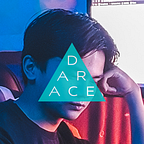THE IDEAL WALLET
In this activity, I am to make a wallet specifically for Jonathan Natividad. The objective is to learn and discover more about him and develop a design of a wallet that would be ideal for him.
PHASE 1: GETTING TO KNOW MORE ABOUT JONATHAN
I let him draw his ideal wallet in 3 minutes, and I interviewed him for 4 minutes afterward. I asked him to share what was in his wallet and its features.
In our 4-minute interview, here are the key points:
- Contents: Picture of loved ones, cards (debit, credit, IDs), Important receipts, Cash
- Features: Classic designs of wallet, Smart Wallet for security and emergencies
- Carries around his wallet all the time. It is either with him or near to him always.
Digging Deeper
For 3 Minutes, I had a follow-up Interview based on what he was able to share in the first interview. These are the notes:
- He wants to carry around a picture to always remind himself of his family in every decision he makes in life.
- His ideal SMART WALLET has a fingerprint scanner, GPS tracker, and a solar panel, which is rechargeable.
Goals and Wishes
After reviewing the interviews, I thought of what he was trying to achieve. These were my thoughts:
- He values convenience and security at the same time.
- He can never be too careful when it comes to his important things.
- He wants a practical and simple design for his ideal wallet since it is what he got used to.
- He wishes for a wallet that meets his way of living and is functional to any circumstances.
Insights
Here were my new learnings about Jonathan’s feelings, motivations, and experiences that maybe he doesn't see. The inferences from what I heard are:
- His ideal wallet is an extension of his personality.
- How organized his wallet is a reflection of how he manages his finances.
- He might not have mentioned this in our interview, but while he explains the features of his ideal wallet, it seems he wants to be “there” for his family.
- He told me that he wanted a small pocket for pills in his wallet. I asked what was that for? He said that it could be for people with heart problems, and I remembered that Jonathan is living with his grandmother, and I thought that it is for.
- I think Jonathan’s ideal wallet serves as a reminder of the important things for the important people in his life.
PHASE 2: TAKING A STAND WITH A POINT-OF-VIEW
The following statement was formulated based on the most compelling need and most interesting insight from Jonathan that would be the foundation of the design work.
Jonathan needs a wallet with necessary compartments for different things without compromising his initial and ideal design because for a SMART WALLET, he wants it to be small enough to fit in his pocket.
GENERATING ALTERNATIVES TO TEST
This is the part where I would be making a volume of sketches of ideas based on the problem statement:
We need to design a SMART WALLET with a simplistic design small enough to fit in a pocket. The wallet should have: 1.) Compartments for cards, pictures, receipts, and Cash 2.) GPS tracker, Finger Print Scanner, Solar-powered charger
PHASE 3: SHARING MY DESIGNS AND CAPTURING FEEDBACK
In this stage, I shared my sketches with Jonathan for 4 minutes. Here were the things he pointed out:
- Sketch 2 looks like an E-cigarette that he didn’t like, while sketch 1 was a simple and standard design of a wallet that he would prefer since he would love it to look more vintage while being a smart wallet.
- He liked Sketches 3,4, and 5 because they had a fresh look. He definitely wanted to try these kinds of wallets.
- Out of the three (Sketches 3,4 and 5), Jonathan picked Sketch 3 because the other two were getting far too “advance” or “smart-looking” in terms of the design.
- He wanted a simple, vintage-looking, and easy on the eyes for a smart wallet.
BUILDING MY SOLUTION
This is my proposed final design for Jonathan’s Ideal Wallet.
FEEDBACK
What worked:
- Able to capture the simplistic and vintage design using minimal features and leather material.
- The SMART features were incorporated into the design, and it looked compact.
- The prototype sketch was easily understood, and it was easy to follow
What could be improved:
- Could’ve up with a more detailed design to show how it works and its mechanisms.
- It would be better if Jonathan were able to hold and interact with the prototype.
- Spent more time sharing comments and inputs to come up with more solid ideas for the wallet.
Questions:
How big is the wallet? Will it fit my pocket?
How many cards or IDs could it hold?
What is the size of the photo that I could put in there?
Ideas:
- High-quality leather
- Water and dirt proof
- Comes with different color but made with the same leather material
DEBRIEF
How did talking to your interviewee inform/influence your design?
Gaining empathy for the person I was designing for made the foundation of what I was developing. This made it easier for me to know more about what he likes and dislikes and incorporate that into the design.
How did testing and getting feedback impact your final design?
Every new inputs and feedback was a crucial step to progress to the final design. It pointed out what needs fixing sooner than coming up with a final design without feedback beforehand to make the necessary changes.
What was the most challenging part of the process for you?
The most challenging part of the process was following the time limit for each interview and feedback. I wanted to get more inputs from my interviewee, and I wanted to share more of my sketches that he might’ve liked.
